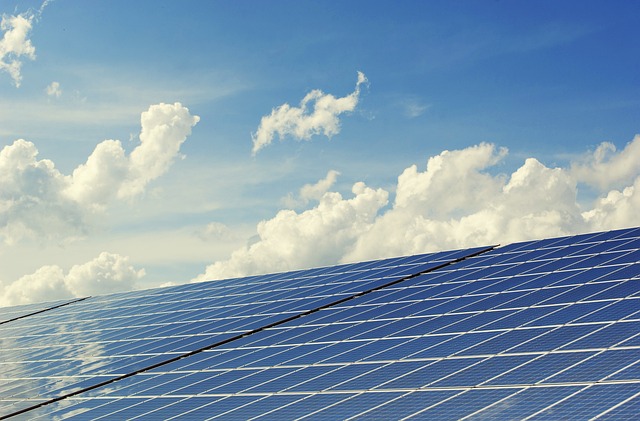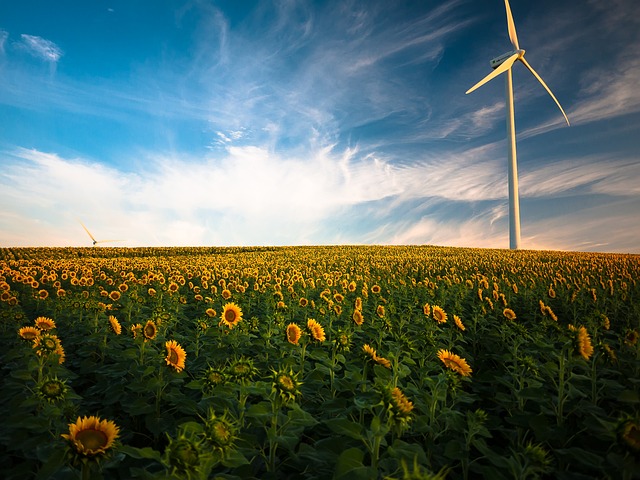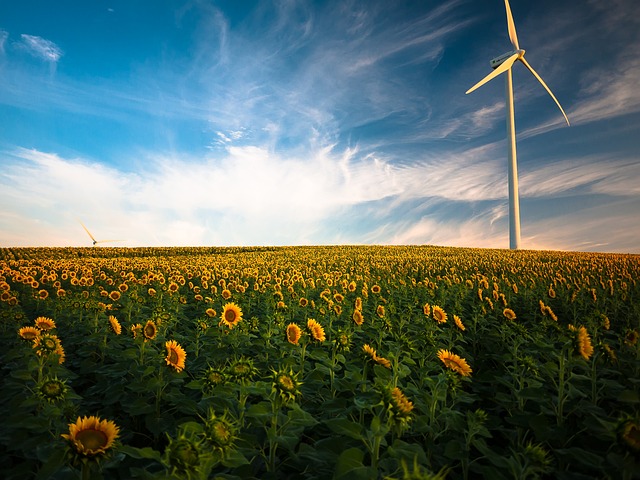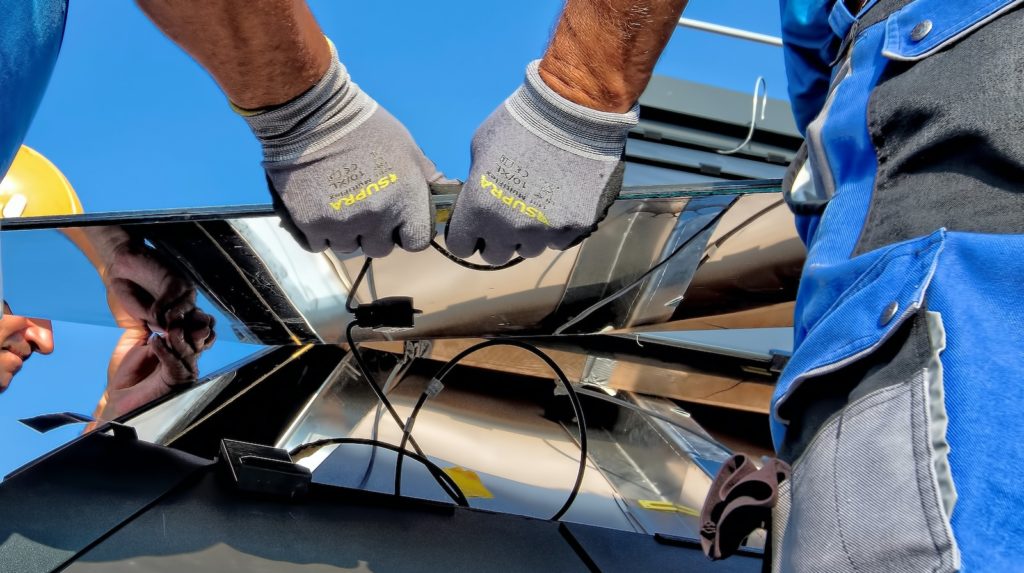When it comes to harnessing renewable energy for your home, have you ever considered installing a wind energy system? It may sound like a daunting task, but don’t worry, because in this article we will break down the top five things you should consider before taking the leap. From understanding your energy needs to evaluating the feasibility of your location, we’ve got you covered. So, if you’re interested in reducing your carbon footprint and potentially saving money on your energy bills, keep reading to learn more about home wind energy systems.
In this article, we will delve into the key factors that you need to take into account when opting for a home wind energy system. From determining the suitable wind resources available in your area to considering the size and type of turbine that best fits your needs, we will provide you with the information you need to make an informed decision. Additionally, we will discuss the costs and financial incentives associated with installing a wind energy system, as well as the maintenance and potential challenges you may face. By the end of this article, you will have a clearer understanding of whether a home wind energy system is the right choice for you. So, let’s get started and explore the world of clean and renewable wind power for your home!
Cost and Financial Viability
Initial Investment
When considering a home wind energy system, the initial investment is a crucial factor to take into account. The cost of purchasing and installing a wind turbine can vary depending on the size and capacity of the system. It’s important to do your research and compare prices from different suppliers to ensure you’re getting the best deal. Additionally, consider the cost of any additional equipment or structures that may be necessary for the installation, such as a tower or foundation.
Maintenance and Repair Costs
Another important financial consideration is the cost of maintaining and repairing your home wind energy system. Like any other mechanical equipment, wind turbines require regular upkeep to ensure optimal performance. This includes inspections, cleaning, lubrication, and periodic replacement of parts. It’s important to factor in these ongoing costs when calculating the financial viability of a wind energy system.
Return on Investment
Despite the initial investment and maintenance costs, a home wind energy system can provide a significant return on investment over time. By generating your own electricity, you can reduce or even eliminate your monthly utility bills. Additionally, if your system produces more energy than you consume, you may have the opportunity to sell the excess power back to the grid, further increasing your financial benefit. It’s important to consider the potential savings and income generated from a wind energy system when assessing its financial viability.
Financial Incentives and Rebates
When exploring the financial viability of a home wind energy system, it’s important to research potential financial incentives and rebates that may be available. Many governments and local authorities offer incentives to encourage the adoption of renewable energy systems, including wind turbines. These incentives can help offset the initial investment and make the system more affordable. Additionally, some utility companies offer rebates or credits for homeowners who generate their own electricity. Be sure to explore these options to maximize your financial benefit.
Location and Site Assessment
Wind Availability
Before installing a wind energy system, it’s important to assess the wind availability in your area. The amount of wind your location receives will directly impact the performance and efficiency of the system. Generally, areas with consistent and strong winds are ideal for wind energy systems. You can access historical wind data from various sources to determine the average wind speeds in your area. It’s recommended to choose a site with average wind speeds of at least 10 miles per hour for a home wind energy system.
Physical and Environmental Considerations
In addition to wind availability, it’s important to consider the physical and environmental factors of your site. For optimal performance, wind turbines require unobstructed access to wind, which means avoiding tall buildings, trees, or other structures that may disrupt the airflow. Additionally, consider the environmental impact of the installation. Ensure that the site is suitable for the construction of a wind turbine and that it won’t cause any harm to local wildlife or ecosystems.
Zoning and Permitting
Before installing a wind energy system, it’s essential to familiarize yourself with local zoning regulations and permitting requirements. Each jurisdiction may have its own rules and restrictions governing the installation of wind turbines. Some areas may have height restrictions or setback requirements that you must adhere to. It’s important to obtain any necessary permits and comply with all local regulations to ensure a smooth installation process.

This image is property of pixabay.com.
Power Output and Energy Needs
Calculating Energy Requirements
To determine the size and capacity of your home wind energy system, it’s important to calculate your energy requirements. Start by assessing your historical energy consumption and evaluate any potential changes in the future. Consider factors such as the number of occupants, appliances, and heating/cooling systems. By understanding your energy needs, you can determine the appropriate size and capacity of your wind turbine system.
Determining Turbine Size and Capacity
Based on your energy requirements, you can then determine the turbine size and capacity that will meet your needs. Wind turbines come in various sizes, ranging from smaller systems designed for residential use to larger systems for commercial applications. It’s important to choose a turbine that can generate enough energy to power your home without overbuilding and incurring unnecessary costs. Consider factors such as the average wind speed in your area and the turbine’s power curve to ensure maximum efficiency.
Balancing Energy Production and Consumption
When opting for a home wind energy system, it’s important to find the right balance between energy production and consumption. While wind turbines can generate a significant amount of electricity, wind speeds can vary throughout the year. It’s important to consider the seasonal variations in wind availability and assess whether your energy consumption matches the energy production of your wind turbine system. This can help ensure that you have a reliable and cost-effective energy supply throughout the year.
Compatibility with Local Grid
Grid Connection Feasibility
When considering a home wind energy system, it’s important to assess the feasibility of connecting to the local grid. Grid connection allows you to supplement your energy needs with power from the grid when your wind turbine system is not producing enough electricity. However, you will need to work with your local utility company to ensure that a grid connection is possible and to understand the requirements and regulations for connecting your wind turbine system to the grid.
Net Metering and Selling Back Excess Power
If your wind energy system produces more electricity than you consume, you may have the opportunity to participate in net metering programs. Net metering allows you to sell the excess power back to the grid, essentially running your meter backwards and earning credits for the electricity you produce. This can further increase the financial benefit of your wind energy system. Research local regulations and policies to understand if net metering is available in your area and how it can benefit you.
Integration with Existing Energy Sources
Before opting for a home wind energy system, consider how it will integrate with your existing energy sources. Wind energy is not always constant, and it’s important to have a backup plan in case your wind turbine system cannot meet all of your energy needs. Consider options such as battery storage or backup generators to ensure uninterrupted power supply during periods of low wind or system maintenance. It’s important to have a comprehensive understanding of your energy needs and explore all integration options for a reliable and resilient energy system.

This image is property of pixabay.com.
Maintenance and Upkeep
Regular Inspections and Servicing
To ensure optimal performance and longevity of your wind energy system, regular inspections and servicing are essential. Regular inspections can help identify any potential issues or maintenance needs before they become major problems. This includes checking for loose hardware, inspecting blades for damage or wear, and ensuring that all components are properly lubricated. It’s recommended to schedule routine maintenance with a qualified technician to keep your system in top condition.
Cleaning and Lubrication
For optimal performance, it’s important to keep your wind turbine system clean and properly lubricated. Wind turbines are exposed to a variety of environmental elements, including dust, dirt, and saltwater (if you live near the coast). Regularly cleaning the blades and other components can help maintain efficiency and prevent damage. Additionally, ensure that all moving parts are properly lubricated to reduce friction and prolong the lifespan of your system.
Troubleshooting and Repairs
Despite regular maintenance, occasional troubleshooting and repairs may be necessary for your wind energy system. It’s important to have a basic understanding of how the system works and be able to identify any potential issues. Common problems may include malfunctions in the electrical system or damage to the blades. If you’re not comfortable making repairs yourself, it’s recommended to work with a qualified technician who can diagnose and fix any issues in a timely manner.
Noise and Visual Impact
Assessing Potential Noise Levels
When opting for a home wind energy system, it’s important to consider the potential noise levels. Wind turbines do generate some noise, which can be a concern if you live in close proximity to neighbors or if you have sensitive ears. The noise level can vary depending on the size and type of turbine, as well as wind conditions. Research the specifications of different turbine models and consider the noise impact on your surroundings before making a decision.
Considering Aesthetics and Landscaping
In addition to noise, it’s important to consider the visual impact of a wind energy system on your property. Wind turbines are tall structures and may not fit aesthetically with all architectural styles or landscapes. Consider the visual impact of a turbine on your property and whether it aligns with your personal preferences and the overall aesthetics of your home. Additionally, explore options for landscaping around the turbine to help mitigate any visual impact.
Mitigating Impact on Wildlife and Surrounding Environment
When considering a home wind energy system, it’s important to be mindful of the potential impact on local wildlife and the surrounding environment. Birds and bats can be at risk of collision with wind turbines, especially in certain migration routes or habitats. It’s important to assess the potential impact on wildlife and take appropriate measures to mitigate any risks. This can include properly siting the turbine away from sensitive areas or implementing measures to deter wildlife from approaching the turbine.

This image is property of pixabay.com.
Safety and Risk Assessment
Understanding Wind Turbine Risks
Like any mechanical equipment, wind turbines come with inherent risks that should be understood and managed. It’s important to educate yourself about the potential risks associated with wind turbine operation, including the potential for mechanical failure, blade damage, or tower collapse. By understanding the risks, you can take appropriate measures to mitigate them and ensure safe operation of your wind energy system.
Ensuring Safe Installation and Operation
To mitigate risks and ensure safe operation, it’s essential to have your wind energy system installed and maintained by qualified professionals. Wind turbine installation requires expertise and compliance with safety standards to ensure proper assembly and secure anchoring. Regular inspections and maintenance should also be conducted by trained technicians to identify any potential safety hazards. By prioritizing safety throughout the installation and operation process, you can minimize the risk of accidents or injuries.
Emergency Preparedness and Fire Safety
While rare, it’s important to be prepared for emergencies and understand the potential risks associated with wind energy systems. Develop an emergency response plan that includes procedures for shutting down the turbine in case of severe weather or other emergency situations. Additionally, be aware of the fire risks associated with wind turbines. It’s important to have appropriate fire suppression systems and ensure that the turbine and surrounding areas are properly maintained and cleared of any potential fire hazards.
Long-Term Sustainability
Expected Lifespan of the System
When opting for a home wind energy system, it’s important to consider its long-term sustainability. Wind turbines have an expected lifespan, typically ranging from 20 to 25 years. Understanding the lifespan of the system allows you to plan for future replacements or upgrades. Additionally, consider the warranty and maintenance agreements that may be available to ensure that the system remains operational and efficient throughout its lifespan.
Recycling and Disposal of Components
To ensure environmental sustainability, it’s important to plan for the recycling and proper disposal of wind energy system components at the end of their lifespan. Many components of wind turbines, such as blades and towers, can be recycled or repurposed. Research recycling options and work with reputable companies that specialize in wind turbine component recycling to ensure proper disposal and minimize the environmental impact.
Upgrading and Adapting to Technological Advancements
Technology in the wind energy sector is evolving rapidly, with advancements in efficiency, manufacturing, and materials. When opting for a wind energy system, consider the potential for future upgrades and adaptations. Choosing a system that allows for easy integration of new technologies can ensure that your wind energy system remains up-to-date and efficient in the years to come. Stay informed about the latest technological advancements in the field and consult with experts to understand the potential for future upgrades.
Community and Legal Considerations
Engaging with Local Community
Before installing a home wind energy system, it’s important to engage with your local community. Discuss your plans with neighbors and address any concerns they may have. Consider the visual impact and potential noise levels of the wind turbine and work with neighbors to find mutually beneficial solutions. Open communication and transparency can help build support and create a positive relationship with the community.
Obtaining Necessary Permits and Licenses
Compliance with local regulations and obtaining necessary permits and licenses is essential when installing a home wind energy system. Research the requirements in your jurisdiction and ensure that you meet all the necessary criteria before proceeding with the installation. This may include permits for construction, electrical work, or zoning approvals. Failure to obtain the required permits can result in fines or legal complications, so it’s important to be diligent in this aspect.
Respecting Property Rights and Regulations
When opting for a home wind energy system, it’s important to respect property rights and regulations. Ensure that your system is installed within the boundaries of your property and comply with any setback or easement requirements. Additionally, be mindful of any regulations or restrictions regarding property aesthetics or land use. Respecting property rights and regulations not only ensures legal compliance but also fosters positive relationships with neighbors and the local community.
Conclusion
When considering a home wind energy system, there are several important factors to take into account. From cost and financial viability to location and site assessment, power output, compatibility with the local grid, maintenance and upkeep, noise and visual impact, safety, long-term sustainability, and community and legal considerations, each aspect is crucial in making an informed decision. By carefully considering these factors, you can determine whether a home wind energy system is the right choice for you, balancing financial, environmental, and practical considerations to create a sustainable and reliable source of energy for your home.



